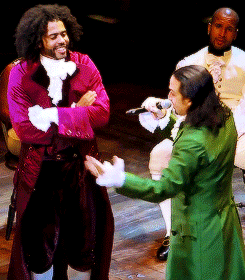In
reviewing my posts from the 2012 election cycle, I noticed that there was
barely any mention of third and minor party candidates.
And
here is why.
In
2012, the final result was Obama 51-47 with third parties and other minor
candidates making up the final 2%.
It
is very likely that the winner of this election will end up with a plurality of
the popular vote as well as winning several states with pluralities in part due
to the historic unpopularity of both major party candidates. Clinton would have
the highest unfavorable ratings in the history of polling if it wasn’t for
Trump. Though most of that has been baked in due to the media’s relentless
hounding of the Clintons over the last 30 years combined with the press giving
Trump a free pass during the primaries.
Many
people would want to see a viable third party option rise. Surveys show there
is an environment for it.
I
have often heard that 45% of the country identify as independent but the
problem with that is once you dig into the numbers there are these things
called closeted partisans. These are the people who do not particularly align
themselves with a major party but generally strongly support some of the ideas
of one of the two major parties that cause them to gravitate in that direction.
Human beings can be complex individuals.
The
two major third party candidates, Jill Stein representing the Greens and Gary
Johnson for the Libertarians, have ran for president before. Last election
cycle Johnson was the best showing for the Libertarian Party since their 1980
bid. Stein only received a little more than one-third of one percent of the
total ballots cast in 2012.
Most
importantly, they each received zero electoral votes. Ross Perot is considered
to be the most successful third-party candidate. Despite receiving nearly 20%
of the popular he too received zero electoral votes in 1992 and the efforts to
build a viable third party with the long defunct Reform Party collapsed by the
start of the 21st century.
The
most recent successful third party bid was George Wallace, the segregationist
governor of Alabama, who ran in 1968 on the American Independent Party. He
claimed a lower share of the popular vote than Perot did – 13.5% - but he won 5
states – mainly in the south – and a faithless elector from North Carolina for
a total of 46 electoral votes.
The
other hindrance to their success is they lack a substantial power base. Quick, how
many seats do the Green and Libertarian Parties hold in any legislative body, federal
or state? How many governorships, senators, other statewide offices?
If
you said zero, you are correct.
The
highest office Johnson held was governor of New Mexico while he was a
Republican. Same with his running mate Bill Weld who was governor of
Massachusetts in the 1990s. The highest office Jill Stein has held is
essentially the equivalent of a city council member and her claim to fame was
setting up a community recycling program. In the 2002 Massachusetts’
gubernatorial election, her Democratic opponent considered her a non-factor.
John
Oliver goes further in criticizing the third parties on they have ideas, but
not necessarily substantive ideas.
And
the two-party system has been in effect in this country since the establishment
of the Constitution. It has evolved and various minor parties have come and
gone over the last 200-plus years. If you want to blame someone for us having
this system, blame these guys:
If
third parties are serious about building a viable option to the two-party
system, they cannot just show up every four years to just run for president. If
they want to build their parties, they need to start by building a viable local
base in their communities and start winning seats in city councils and then
eventually make a play for state legislature and above. This is a model that
Bernie Sanders did building his brand as Independent.
However,
given their inability to organize I doubt they will be nothing more than
another footnote in American politics.

No comments:
Post a Comment